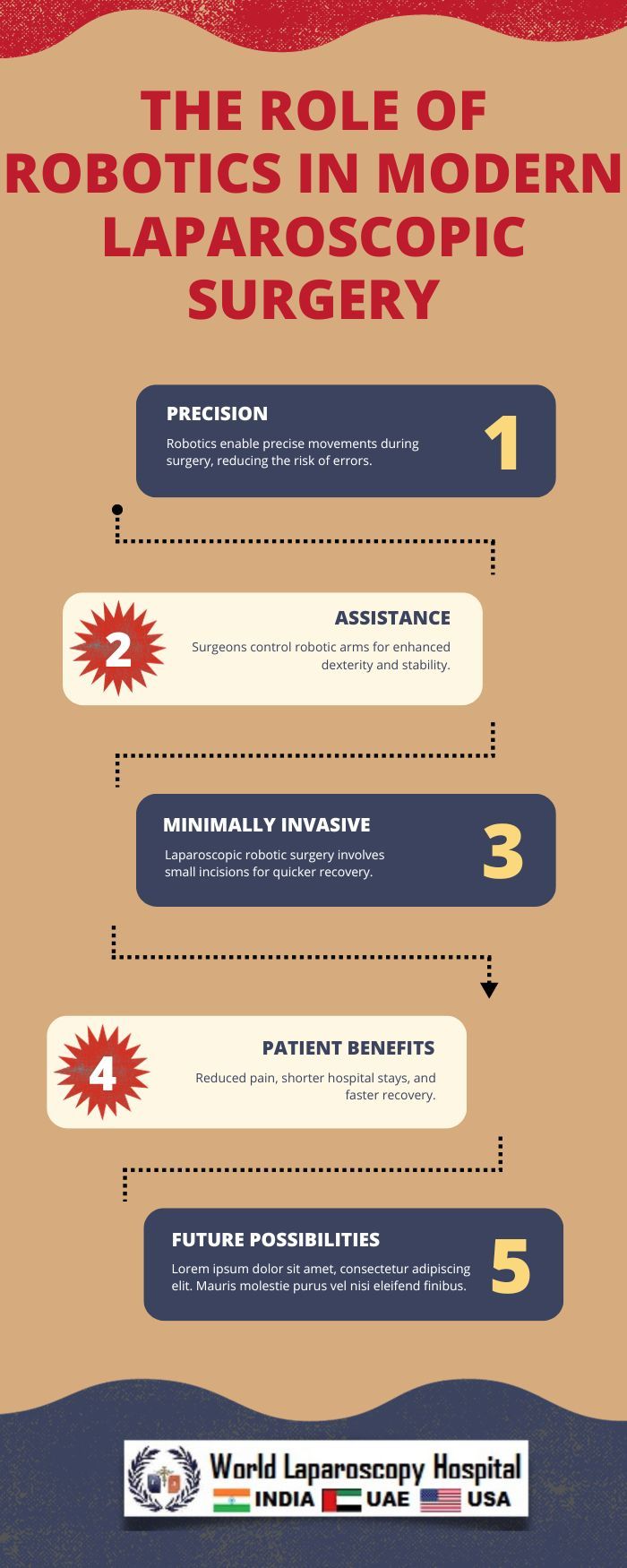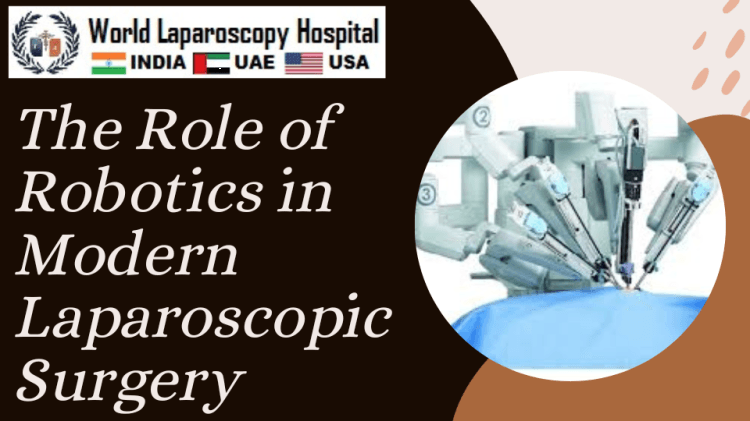Title: The Role of Robotics in Modern Laparoscopic Surgery
Introduction
In the ever-evolving landscape of medical technology, robotics has emerged as a game-changer in the field of surgery. Laparoscopic surgery, often referred to as minimally invasive surgery, has gained popularity for its reduced invasiveness and quicker recovery times. Robotics has played a crucial role in enhancing the precision and capabilities of laparoscopic procedures, revolutionizing modern surgery practices.

This article delves deep into the role of robotics in modern laparoscopic surgery, exploring its evolution, applications, benefits, challenges, and the future prospects of this transformative technology.
Evolution of Robotic Surgery
Robotic surgery in its current form can be traced back to the early 2000s when the da Vinci Surgical System, developed by Intuitive Surgical Inc., was introduced. This robotic-assisted surgical system provided surgeons with an innovative tool to perform complex procedures with greater precision and control.
The da Vinci system consists of robotic arms controlled by the surgeon through a console. The robotic arms mimic the surgeon's hand movements with enhanced dexterity and a range of motion that surpasses human capabilities. This technology marked the beginning of a new era in laparoscopic surgery.
Applications in Laparoscopic Surgery
Robotic surgery has found applications in various fields of surgery, with laparoscopic procedures being one of the primary beneficiaries. Some of the key areas where robotics has made a significant impact include:
-
Prostatectomies: Robotic-assisted laparoscopic prostatectomy is now the gold standard for treating prostate cancer. The precision and magnified view offered by robotic systems help surgeons remove cancerous tissue while preserving surrounding healthy tissue.
-
Hysterectomies: Minimally invasive robotic-assisted hysterectomies have become increasingly common, allowing for smaller incisions and faster recovery times for patients.
-
Colorectal Surgery: Complex colorectal procedures, such as resections, are facilitated by robotic systems, enabling surgeons to navigate intricate anatomical structures with ease.
-
Bariatric Surgery: Robotic-assisted bariatric surgery aids in the treatment of obesity, offering improved outcomes and reduced postoperative pain.
-
Gastrointestinal Surgery: Procedures like cholecystectomy (gallbladder removal) and fundoplication (anti-reflux surgery) benefit from the precision and control provided by robotic systems.
-
Cardiac Surgery: Though primarily associated with laparoscopic procedures, robotics has also made inroads into cardiac surgery, assisting in minimally invasive heart surgeries.
Advantages of Robotic Laparoscopic Surgery
The adoption of robotic technology in laparoscopic surgery offers several advantages for both surgeons and patients:
-
Enhanced Precision: Robotic systems provide surgeons with a magnified, 3D view of the surgical site and offer unmatched precision in movements, reducing the risk of errors.
-
Reduced Invasiveness: Smaller incisions lead to minimal tissue damage, less pain, and quicker recovery times for patients, ultimately improving their quality of life.
-
Improved Ergonomics: Surgeons operate from a console, which allows for more comfortable and ergonomic positions, reducing fatigue during lengthy procedures.
-
Steady Hands: Robotic arms are not subject to tremors or hand fatigue, ensuring steady and controlled movements throughout the surgery.
-
Quicker Recovery: Patients undergoing robotic-assisted laparoscopic surgery often experience shorter hospital stays and faster return to their daily activities.
-
Less Blood Loss: Precise incisions and cauterization techniques in robotic surgery result in minimal blood loss during procedures.
-
Minimal Scarring: Smaller incisions mean less scarring, enhancing the cosmetic outcomes of surgery.
Challenges and Limitations
While robotic laparoscopic surgery offers numerous advantages, it also comes with challenges and limitations:
-
Cost: Acquiring and maintaining robotic systems can be expensive, which can limit their availability in some healthcare settings.
-
Training: Surgeons require specialized training to operate robotic systems effectively, and there is a learning curve associated with mastering this technology.
-
Lack of Haptic Feedback: Surgeons may not have the tactile feedback they are accustomed to in traditional surgery due to the absence of haptic sensations.
-
Size of Equipment: The size of the robotic system can limit access to tight surgical spaces, although advancements in technology are addressing this issue.
-
Dependency on Technology: Technical issues or malfunctions with robotic systems can disrupt surgery and require a backup plan.
Future Prospects
The future of robotic laparoscopic surgery looks promising, with ongoing research and developments aimed at addressing its limitations and expanding its applications:
-
Cost Reduction: Efforts are underway to make robotic technology more affordable, enabling its wider adoption in healthcare facilities.
-
Training Programs: Comprehensive training programs are being developed to ensure that surgeons are proficient in robotic surgery techniques.
-
Advanced Robotics: The next generation of robotic systems will likely feature improved ergonomics, smaller instruments, and enhanced haptic feedback.
-
Telesurgery: Remote robotic surgery, where a surgeon can operate on a patient located in a different geographic location, holds significant potential for the future of medicine.
-
Artificial Intelligence: Integrating AI algorithms into robotic systems could assist surgeons in decision-making and enhance surgical precision.
-
Customized Procedures: Robotic systems may become more tailored to individual patient anatomy, further optimizing surgical outcomes.
Conclusion
Robotic technology has undeniably transformed the landscape of laparoscopic surgery, providing surgeons in Gurugram and worldwide with powerful tools to deliver better patient outcomes. The precision, reduced invasiveness, and quicker recovery times associated with robotic-assisted laparoscopic surgery have made it a preferred choice for many complex procedures.
While challenges such as cost and training persist, ongoing advancements and research indicate a promising future for this transformative technology. As robotic systems continue to evolve and become more accessible, the benefits of modern laparoscopic surgery will reach an even broader patient population, reshaping the field of surgery in the years to come.
